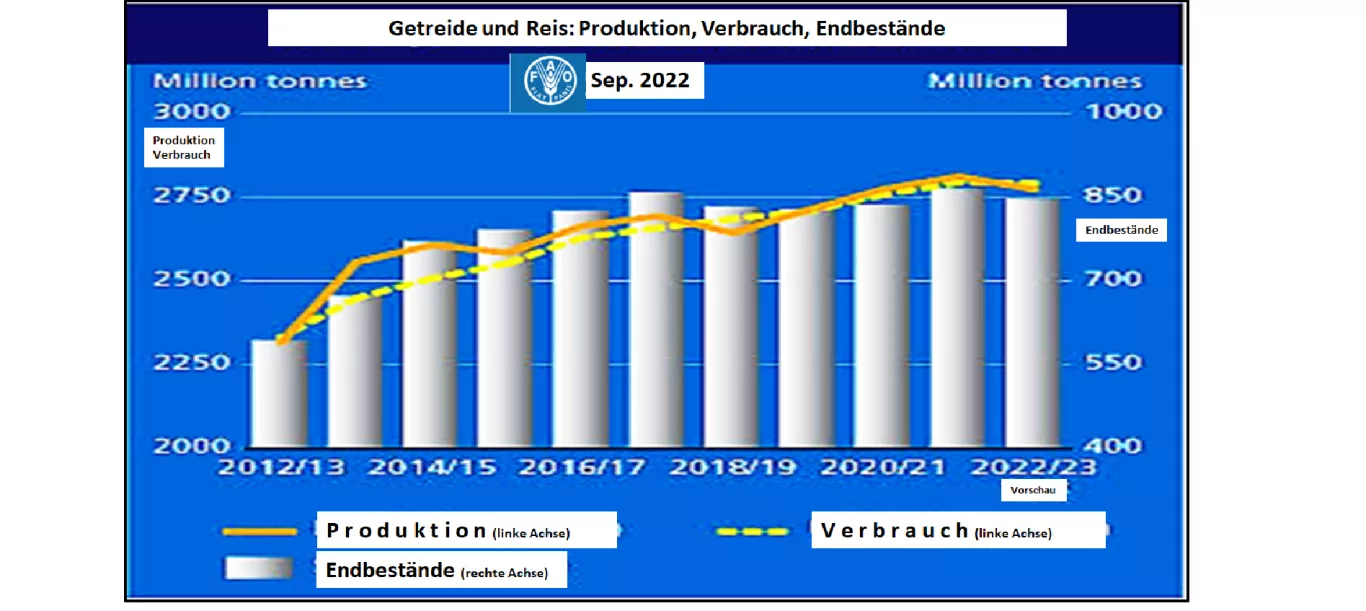FAO estimates lower global grain supply in 2022/23 In its most recent September 2022 issue, the Food and Agriculture Organization of the United Nations (FAO) adjusted the world grain supply, including rice, to the changed yield conditions. Production is estimated at 2,774 million t (previous year 2,813 million t). Global consumption is estimated at 2,792 million t. Accordingly, the probable closing stock is reduced to 845 million t. The supply figure falls from 30.9% in the previous year to 29.5% at the end of the year. Stocks last only 110 days compared to last year's 113 days. Although the result is manageable, the circumstances accompanying the war in Ukraine with the energy and transport problems are exacerbating the global supply situation. The global wheat harvest is estimated at 777 million t (previous year 778 million t). Global consumption remains almost unchanged compared to the previous year at 773 million tons. Closing stocks are only marginally reduced. The supply figure remains at 38% ending inventory for consumption.However, global wheat trade is expected to drop from 195 to 191 million tons. However, the situation for feed grain , with a focus on maize, is viewed more critically. Production is classified as down -26 Mt to 1,483 Mt. Global consumption , on the other hand, is expected to be only slightly lower than in the previous year at 1,497 million t. The background is the low earnings expectations in the EU and the USA. Accordingly, the supply figures fall from 29.8% to 27.6% at the end of the year, based on consumption. Stocks are only enough for 86 days compared to the previous year with 93 days. The FAO estimates the global rice harvest at 514.5 million t (previous year 525.5 million t). Consumption is only slightly below the previous year's level at 522 million t. A significant reduction in inventories is therefore to be expected. The reserves are sufficient for a calculated 133 days. The world grain market 2022/23 is part of a series of years with a trend towards falling supply.The adverse conditions of the Ukraine war with rising energy and transport costs increase security of supply, especially for the importing countries. The unfavorable cultivation conditions for winter seed in the EU and the persistently rising fertilizer costs lead to rather low harvest expectations for the coming year. This results in higher price levels.


